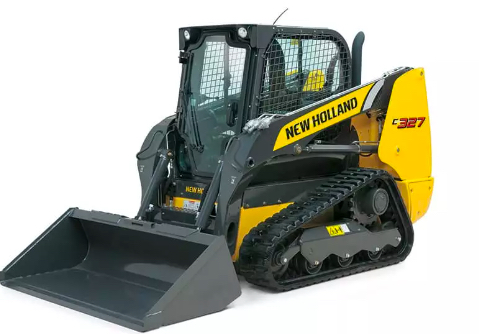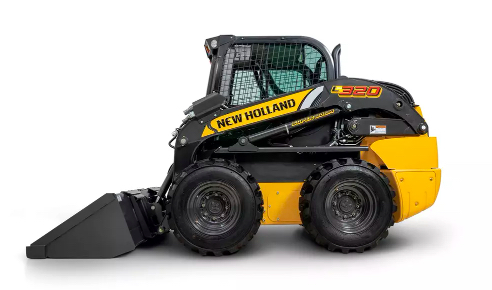Were you having trouble with your New Holland Skid Steer Drive? Don't worry. You're not alone. Many people have experienced these issues and found solutions to get their Skid Steer working again. In this article, we'll explore the common causes of New Holland Skid Steer Drive Problems and provide solutions to help you get back to work.
💥See also: New Holland Workmaster 33 Problems
Troubleshooting Common New Holland Skid Steer Drive Problems

When it comes to New Holland Skid Steer Drive Problems, you're not alone. Many people have experienced these issues and have found solutions to get their Skid Steer back in action. In this article, we'll discuss the most common causes of New Holland Skid Steer Drive Problems and provide solutions to help you get back to work. From worn tires and faulty drive belts to hydraulic issues and electrical problems, we'll cover all the bases to help you diagnose and fix the problem quickly.
Table: Troubleshooting Common New Holland Skid Steer Drive Problems
| Symptom | Cause | Solution |
|---|---|---|
| Skid Steer won't turn on | Dead battery, faulty wiring, blown fuse | Replace the battery, check to the wire, replace the fuse |
| Skid Steer won't move | Worn tires, defective drive belt, hydraulic issue, or electrical problem | Replace tires, replace the drive belt, inspect the hydraulic system, and check for electrical fault |
| Skid Steer is sluggish | Faulty spark plugs, clogged air filter, dirty fuel filter | Replace spark plugs, clean air filter, replace fuel filter |
| Skid Steer is noisy | A loose belt, worn bearings, faulty gears | Tighten the belt, replace bearings, inspect gears |
Loss of Power
One of the most common New Holland Skid Steer Drive Problems is a loss of power. Various issues, including low fuel pressure, a faulty fuel pump, clogged fuel filters, or a weak battery, can cause this. Check the fuel pressure, pump, and filters to diagnose and fix this issue. If these are all in working order, the next step is to check the battery and charging system. If the battery is weak, it may need to be replaced or recharged.
Poor Performance
Poor performance is another issue that can occur with New Holland Skid Steers. This can be caused by an engine not running at peak efficiency or a transmission not functioning correctly. To troubleshoot this issue, check the spark plugs and air filter for signs of wear or damage, and inspect the information for any signs of leakage or damage. If the problem persists, it may be necessary to have the engine or transmission serviced.
📢Read also: New Holland Skid Steer Warning Lights
Overheating
Overheating can be a severe problem with New Holland Skid Steers, as it can cause permanent damage to the engine and other components. This can be caused by a lack of proper maintenance, a clogged radiator, a faulty thermostat, or a defective cooling fan. To diagnose and fix this issue, check the radiator and thermostat. If these are both in working order, then the next step is to inspect the cooling fan. If the fan is not functioning correctly, it may need to be replaced.
Critical Takeaways for Troubleshooting New Holland Skid Steer Drive Problems
- Dead batteries, faulty wiring, and blown fuses can cause the skid steer not to turn on.
- Worn tires, faulty drive belts, hydraulic issues, and electrical problems can cause the skid steer not to move.
- Faulty spark plugs, clogged air filters, and dirty fuel filters can cause the skid steer to be sluggish.
- Loose belts, worn bearings, and faulty gears can cause the skid steer to be noisy.
- Low fuel pressure, faulty fuel pumps, clogged fuel filters, and weak batteries can cause the skid steer to experience a loss of power.
- Poor engine performance and transmission problems can cause the skid steer to perform poorly.
- Lack of proper maintenance, clogged radiators, faulty thermostats, and defective cooling fans can cause the skid steer to overheat.
📢Read also: New Holland Boomer 47 Problems
Be Proactive in Preventing New Holland Skid Steer Drive Problems
Troubleshooting New Holland Skid Steer Drive Problems can be a daunting task. However, many of these issues can be avoided by taking proactive steps to maintain the skid steer, such as regularly checking the fuel system, transmission, and cooling system. Periodically changing the fuel, oil, and air filters, inspecting the spark plugs, and ensuring the tires are properly inflated are all simple yet effective ways to prevent the skid steer from having issues. Taking the time to maintain the skid steer properly can save time and money in the long run.
